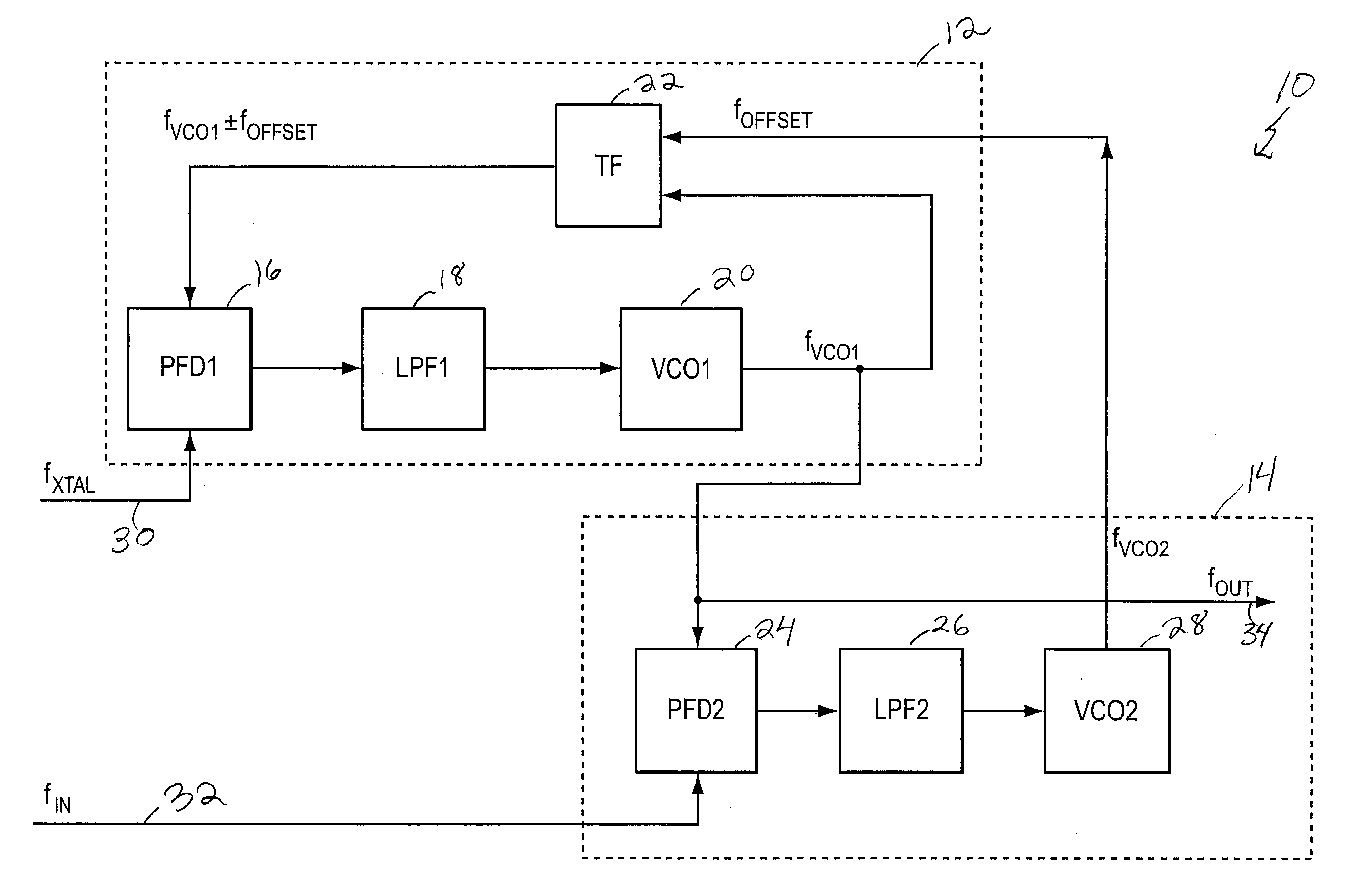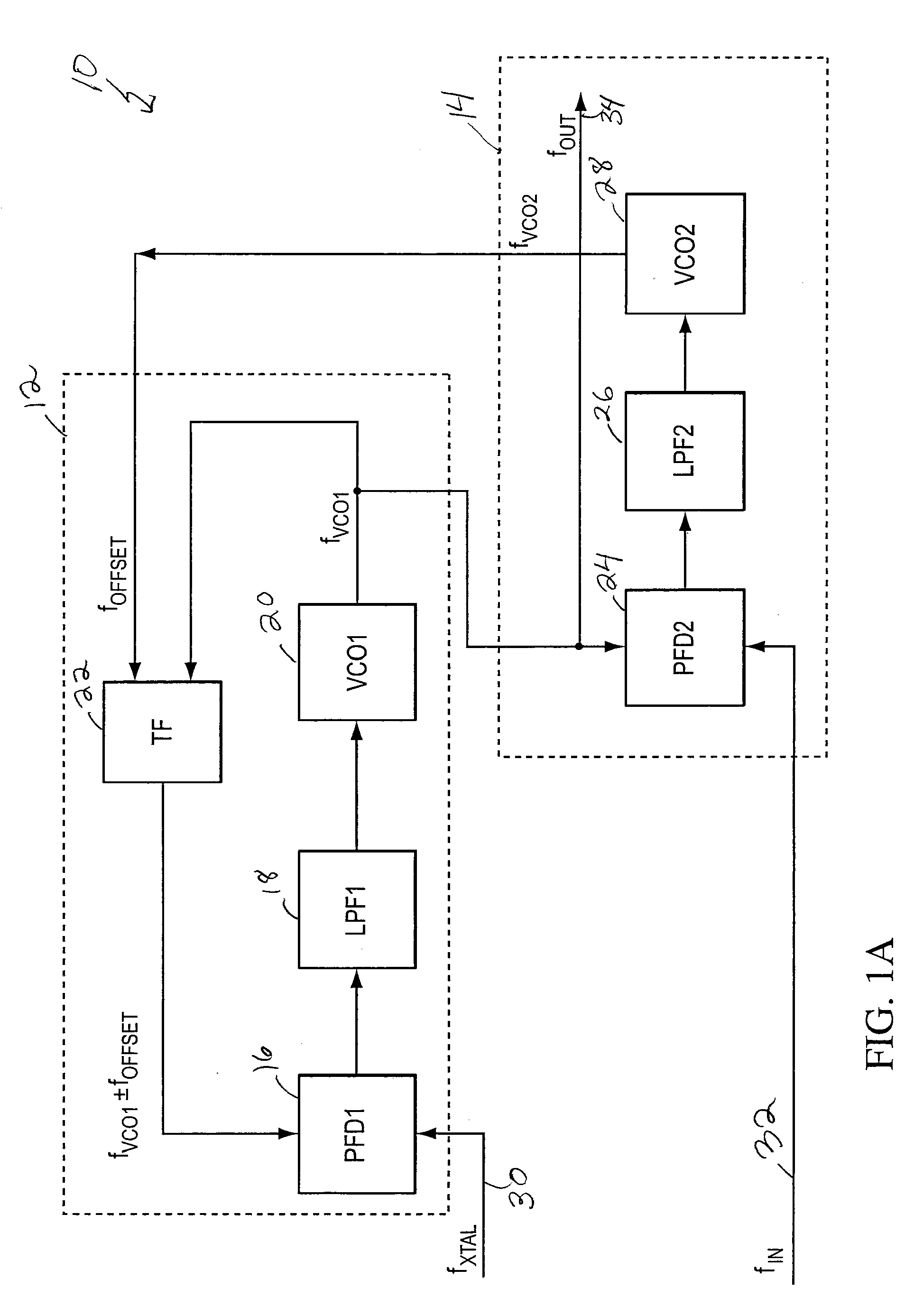Dual pll loop for phase noise filtering
a phase noise filtering and dual loop technology, applied in the field of low phase noise plls, can solve the problems of poor far-out phase noise performance and lack of wide tunability, and achieve the effect of low noise frequency source and good far-out phase noise characteristics
- Summary
- Abstract
- Description
- Claims
- Application Information
AI Technical Summary
Benefits of technology
Problems solved by technology
Method used
Image
Examples
Embodiment Construction
[0021]FIG. 1A shows a block diagram of a system for tuning a crystal oscillator without dividers. The diagram includes a main PLL and a secondary PLL. The main PLL includes a phase frequency detector PFD1, a loop filter LPF1, a voltage controlled oscillator VCO1, and a frequency translation circuit TF. The secondary PLL includes a phase frequency detector PFD2, a loop filter LPF2, a voltage controlled oscillator VCO2. The inputs to the PFD1 are the output of the frequency translation circuit and the frequency from a reference frequency source, such as a crystal oscillator. The output of PFD1 drives the LPF1, which, in turn, controls, via a control input, the frequency of VCO1. The inputs to the frequency translation circuit are the output fVCO1 of VCO1 and fOFFSET. The inputs of PFD2 are the input frequency to be filtered fIN and the output of VCO1. The output of PFD2 drives LPF2 which in turn controls, via a control input, the frequency fOFFSET of VCO2. The output of the system is ...
PUM
 Login to View More
Login to View More Abstract
Description
Claims
Application Information
 Login to View More
Login to View More - R&D
- Intellectual Property
- Life Sciences
- Materials
- Tech Scout
- Unparalleled Data Quality
- Higher Quality Content
- 60% Fewer Hallucinations
Browse by: Latest US Patents, China's latest patents, Technical Efficacy Thesaurus, Application Domain, Technology Topic, Popular Technical Reports.
© 2025 PatSnap. All rights reserved.Legal|Privacy policy|Modern Slavery Act Transparency Statement|Sitemap|About US| Contact US: help@patsnap.com



